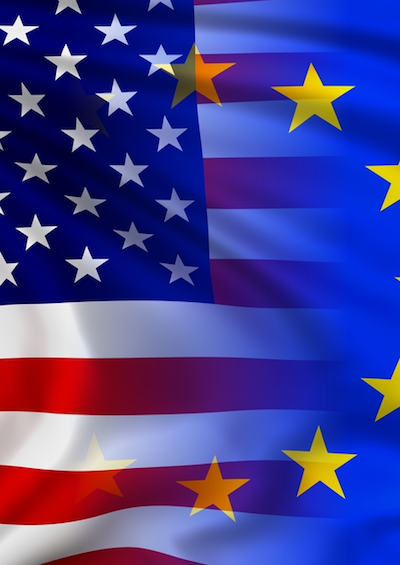TTIP: Strengthening a Global Economic Heavyweight
TTIP will help the U.S. and EU to meet the challenges of a globalizing world
December 4, 2014

There is a vibrant, if increasingly contentious transatlantic debate over the benefits of a further intensification of the transatlantic trade and investment relationship.
Without a doubt, the contemplated TTIP deal concerns a true global economic heavyweight. At present, the transatlantic market accounts for:
- 60% of total Foreign Direct Investment (FDI);
- 50% of global output (in dollars);
- 40% of the global GDP (in terms of purchasing power parity);
- 40% of industrial added value;
- 1/3 of the global trade in goods and services;
- 1 in 3 patent applications in the world;
- 16% of added value in the agricultural sector;
- And yet only 12% of the global population.
The U.S.-EU market also generates some $5.3 trillion in sales annually and employs more than 15 million workers.
In addition, Johns Hopkins University SAIS studies show that the stock of EU and U.S. investment in each other’s economy was a staggering $3.7 trillion in 2011, and EU affiliates alone employed some 3 million Americans in 2010.
On a historic basis, the U.S. investment position in Europe was 14 times larger than in the BRICS — and nearly four times larger than in all of Asia in 2011. U.S. investment in Ireland alone was more than six times larger than U.S. investment in China.
If, according to critics, TTIP offers only modest growth prospects, it bears keeping in mind that it does so on a very large economic base. On such a basis, even small percentage increases can jumpstart the recovery and create jobs.
This is all the more important as this is a critical time for both the United States and the European Union with regard to achieving two counterbalancing objectives at the same time: promoting economic growth and fighting growing deficits.
According to a widely-quoted study by the German Bertelsmann Foundation, TTIP would lead to a long-term increase in per-capita GDP of more than 13% in the United States and 5% in the European Union.
Unemployment would decline by 0.45% across the entire OECD and by up to 0.76% in crisis-ridden countries like Portugal. Indeed, therefore, jobs and growth are the driving forces that can help build support for an agreement among Europeans and Americans alike.
Strategically, and that is my second point, TTIP also helps the U.S. and EU to meet the challenges of a globalizing world through a common cause: promoting a rules-based multilateral economic system.
Editors Note: The following text was adapted from a speech delivered as the Columbus Day Lecture 2014 at the Center for International Security and Governance, Rheinische Friedrich-Wilhelms-Universität Bonn. Full text here.
Takeaways
What we are aiming to create with TTIP truly is a behemoth of sheer economic weight.
The U.S.-EU market generates some $5.3 trillion in sales annually and employs more than 15 million workers.
On a historic basis the US investment position in Europe was 14 times larger than in the BRICS.
Read previous

Global Trade
Regionalism, Asia Style
December 2, 2014
